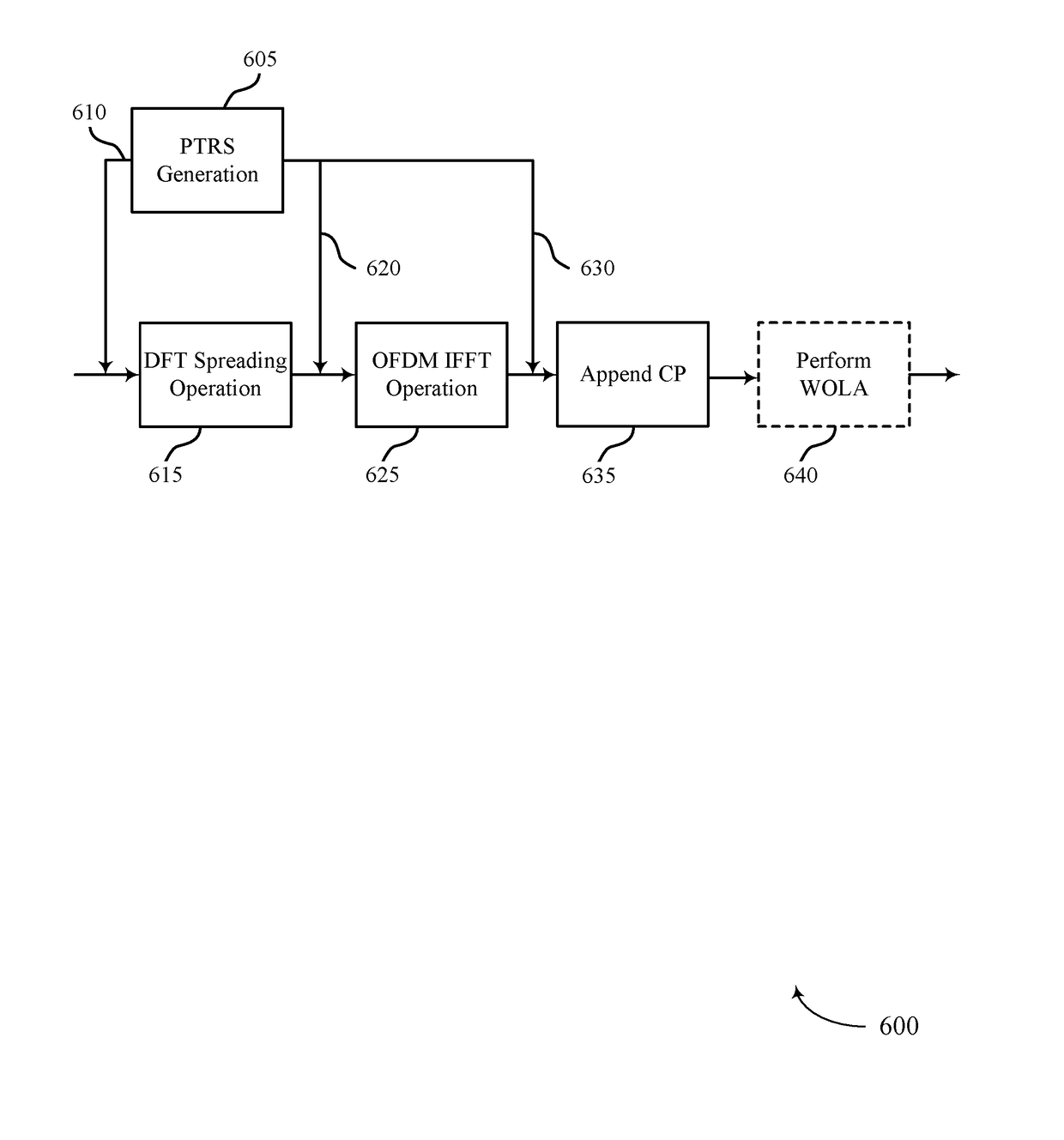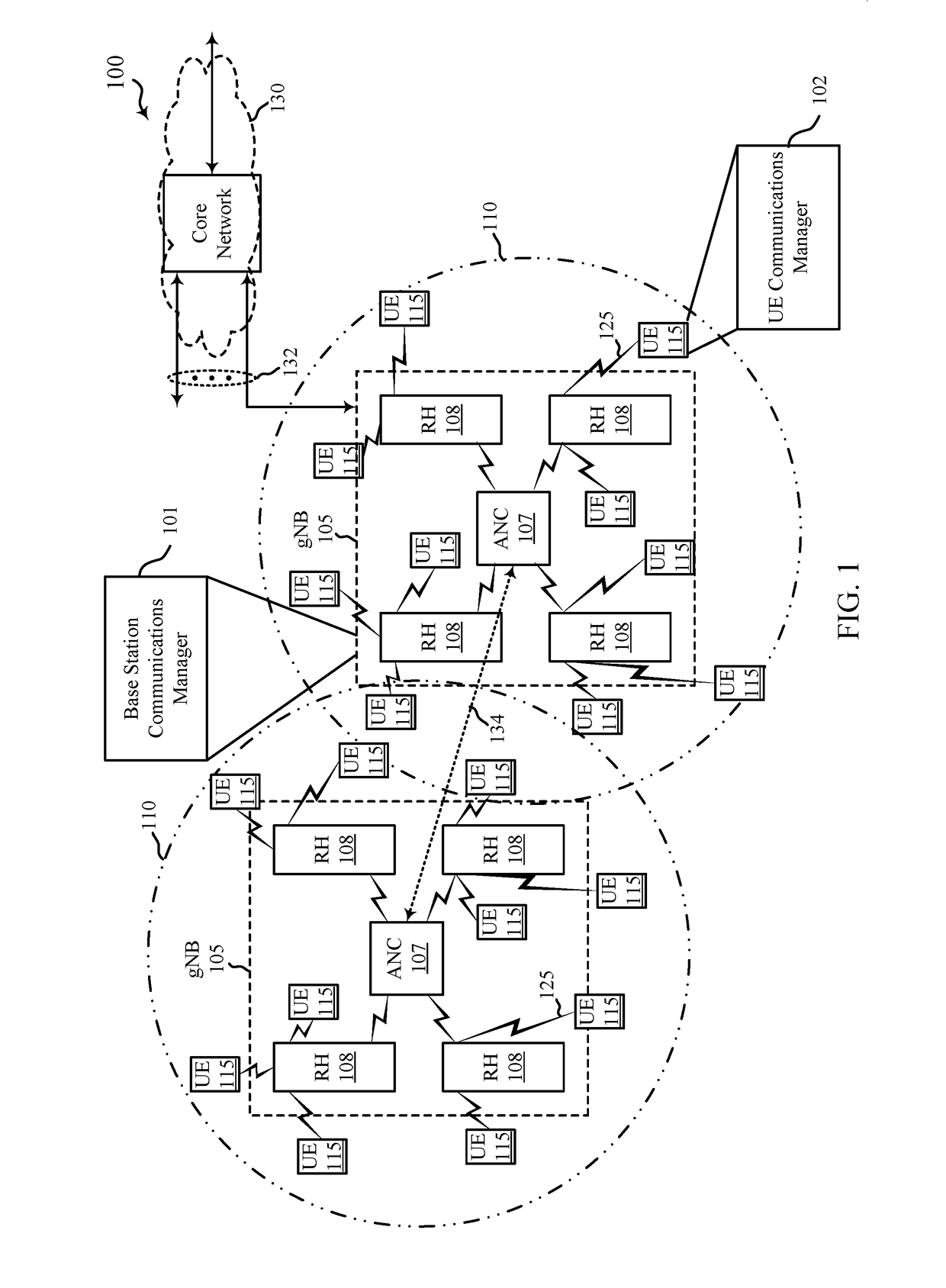Enhancements to phase-noise compensation reference signal design and scrambling
a reference signal and phasenoise compensation technology, applied in the field of wireless communication, can solve the problems of increasing scheduling overhead, interference affecting the transmission of wireless communications systems, and receivers being unable to efficiently receive reference signals
- Summary
- Abstract
- Description
- Claims
- Application Information
AI Technical Summary
Benefits of technology
Problems solved by technology
Method used
Image
Examples
Embodiment Construction
[0040]The described techniques relate to improved methods, systems, devices, and apparatuses that support enhancements to phase-noise compensation reference signals (PCRS) design and scrambling. Generally, the described techniques provide for identification of a DC tone, which may influence transmissions of PCRS (e.g., which may alternatively be referred to as phase-noise tracking reference signals, phase tracking reference signals, or PTRS). It is to be understood that, though described in the context or PTRS collision avoidance, the DC tone indication may be used for other purposes (e.g., multi-user scheduling) without deviating from the scope of the present disclosure.
[0041]As an example, transmitting PTRS to avoid collisions with the DC tone may enable improved reception of PTRS by a base station or a UE. In one example, multiple PTRS may be transmitted using sets of resource blocks (RBs), where a frequency for each PTRS within the sets of RBs is different from a frequency corre...
PUM
 Login to View More
Login to View More Abstract
Description
Claims
Application Information
 Login to View More
Login to View More - R&D
- Intellectual Property
- Life Sciences
- Materials
- Tech Scout
- Unparalleled Data Quality
- Higher Quality Content
- 60% Fewer Hallucinations
Browse by: Latest US Patents, China's latest patents, Technical Efficacy Thesaurus, Application Domain, Technology Topic, Popular Technical Reports.
© 2025 PatSnap. All rights reserved.Legal|Privacy policy|Modern Slavery Act Transparency Statement|Sitemap|About US| Contact US: help@patsnap.com



